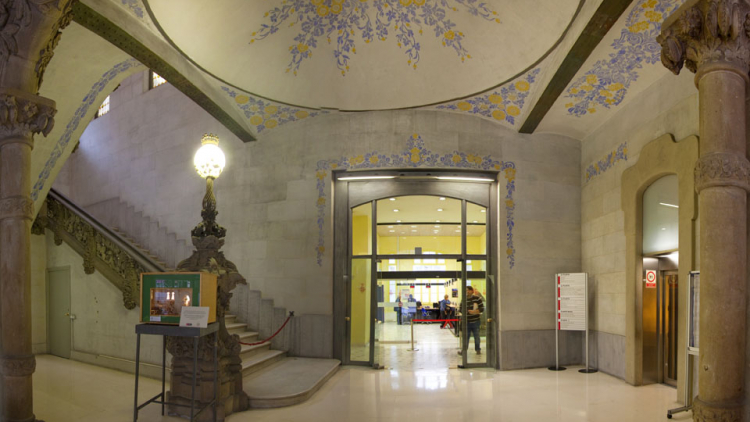History of the Archive
From the Clock Tower to the Carrer de la Creu Coberta basement
The origins of these archives date back to the 1930s, when the local hiking club, Club Excursionsta de Sants, suggested creating an historical archive for Sants. This initiative was later taken up by the Unió Excursionista de Catalunya (UEC) in Sants.
Under the Franco regime and up to the early years of the democratic Transition, there was a brake on archive activity. This motivated the residents’ associations to call for the neighbourhood archives to be maintained, improved and developed.
Then, in 1979, the Sants UEC began negotiations with the District Council to transfer the Council’s documentary records, with a commitment to improving their conservation in decent facilities, encouraging the public to consult them and the aim of creating a historical archive of the Sants neighbourhood. The same year, at the first full meeting of the old District VII Municipal Council, it was agreed to restore and equip the Torre del Rellotge, a clock tower in Plaça de Bonet i Muixí, so it could become the archive centre.
The work to get this medieval building ready for its new role stretched out until the summer of 1983 but, after two years, the building officially became the centre of the Sants UEC Sants Historical Archives.
A year later, these records formed a vital part of the private fonds of the new Sants-Montjuïc District Municipal Archives, created around the consolidation of democracy and the confluence of two processes: municipal decentralisation with the creation of the District Archives network in 1988 and the determination to recover the historical heritage of the old towns and villages of the Barcelona Plain.
The building of spheres
The Sants-Montjuïc Archives is currently housed in the old Hostafrancs Deputy Mayor’s residence, designed by the architect Jaume Gustà i Bondia and built between 1895 and 1915. This is a large, richly ornamental building, as befits a typical 19th-century building.
The archives expanded to different part of the district headquarters in 1991 and finally a new centre was opened on the underground floor to bring all the records together.

